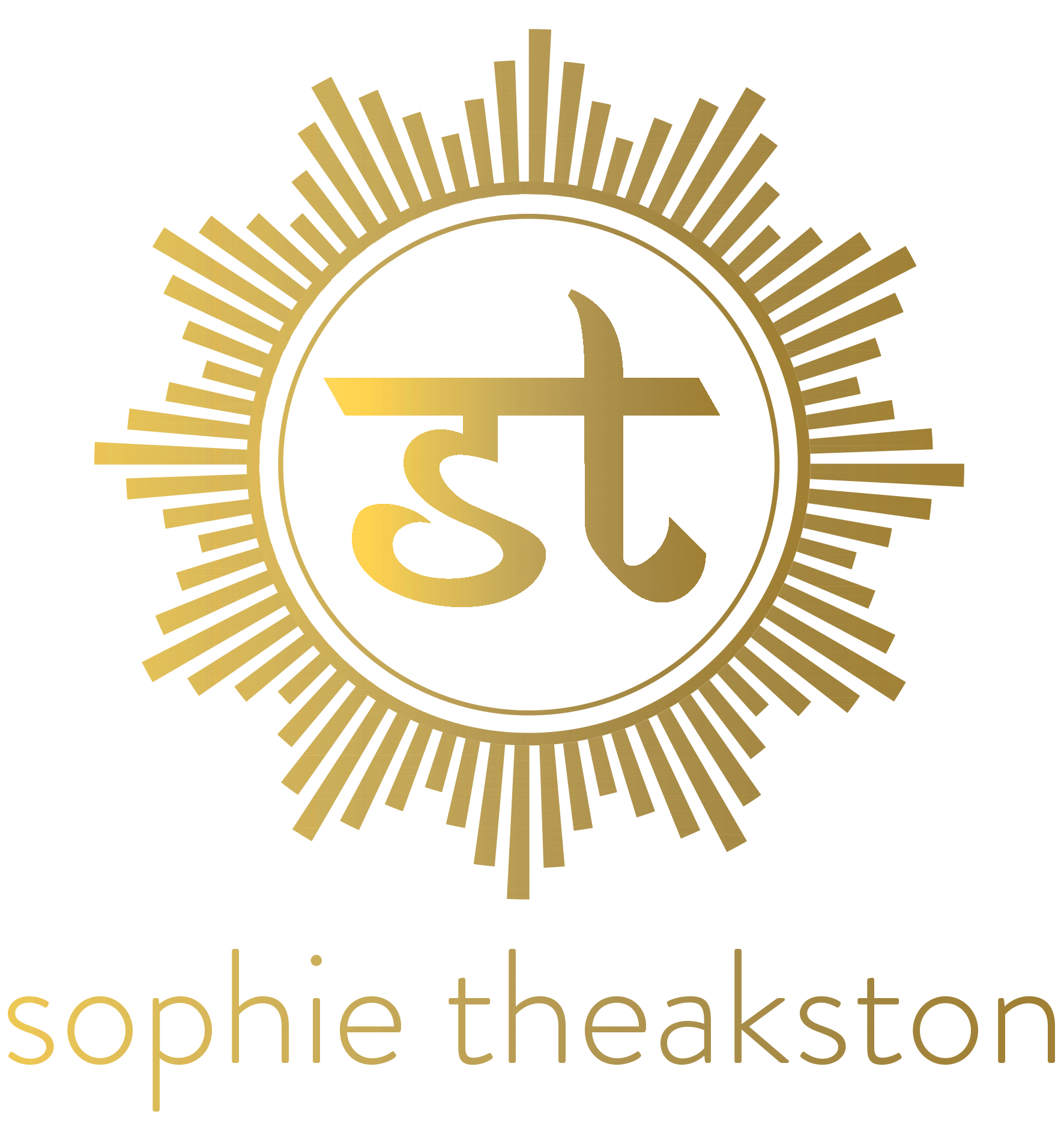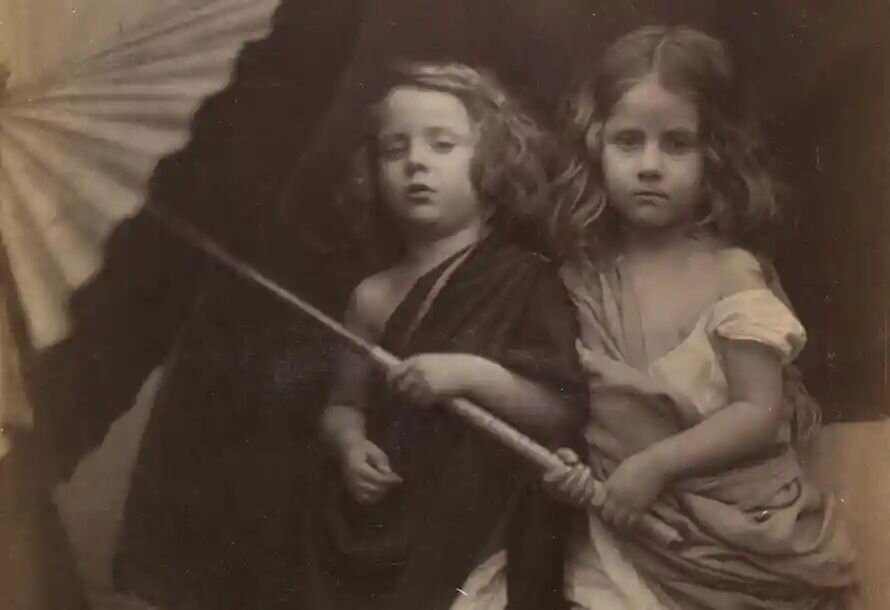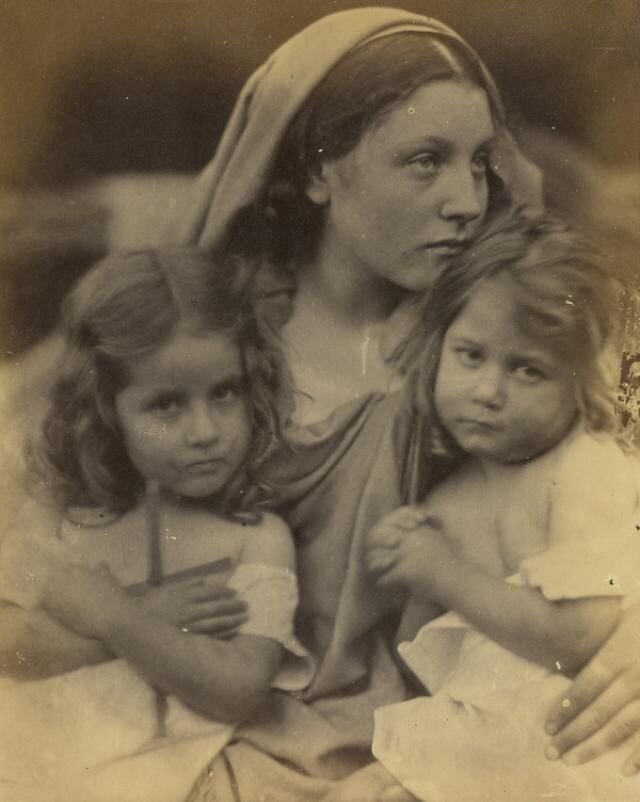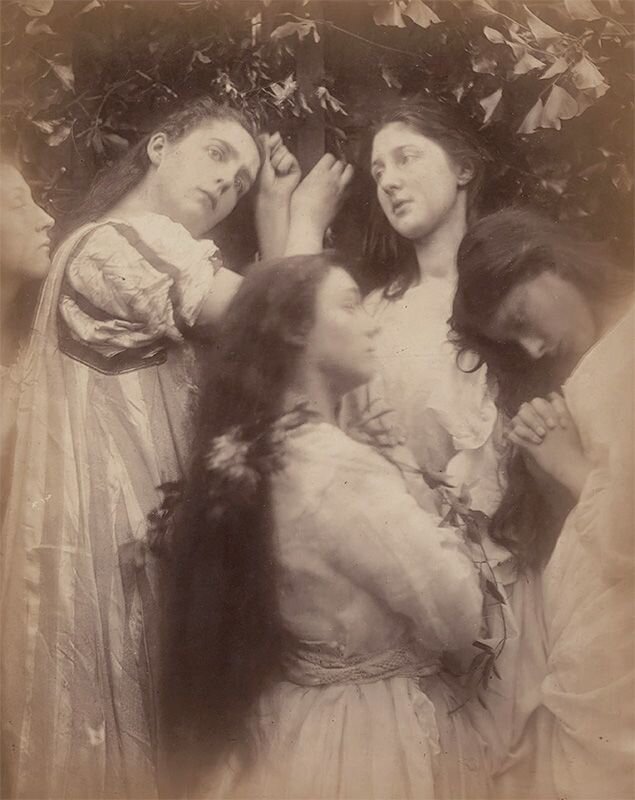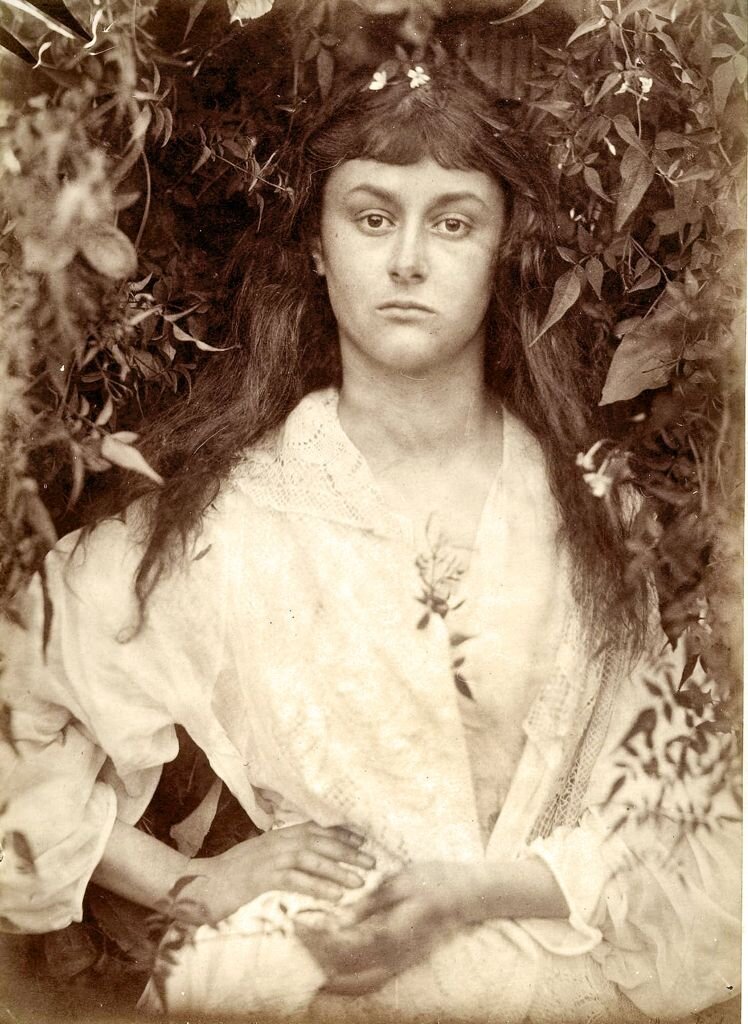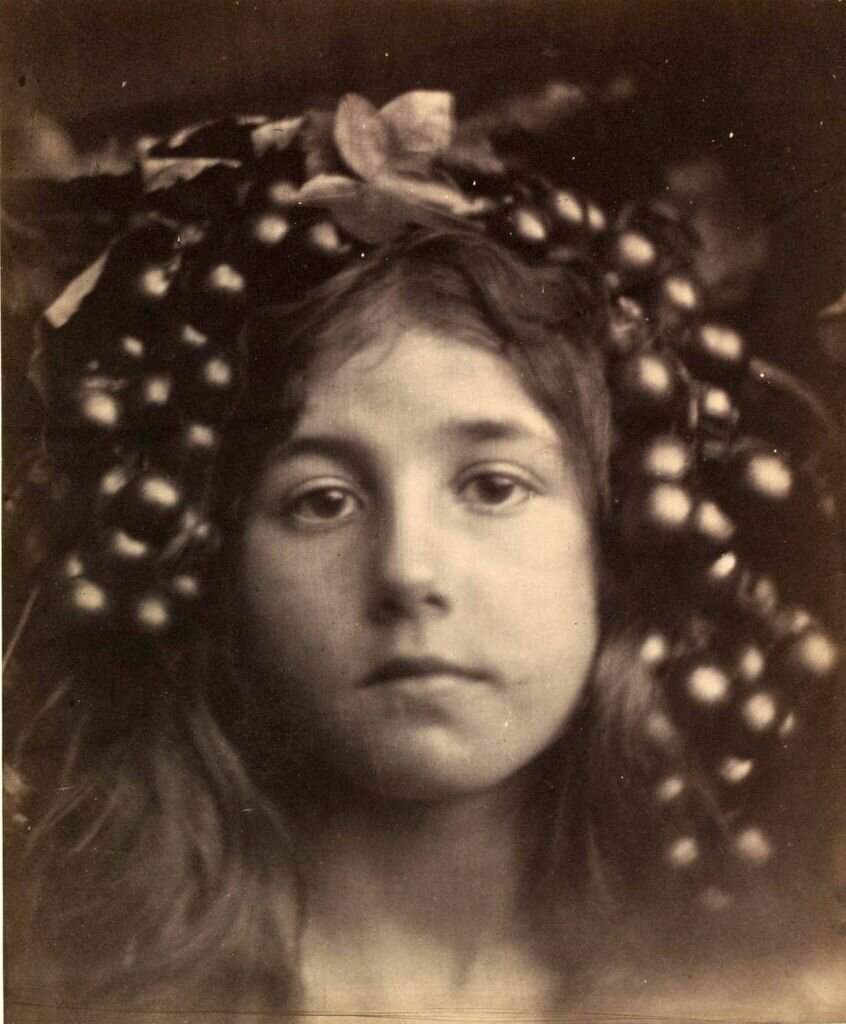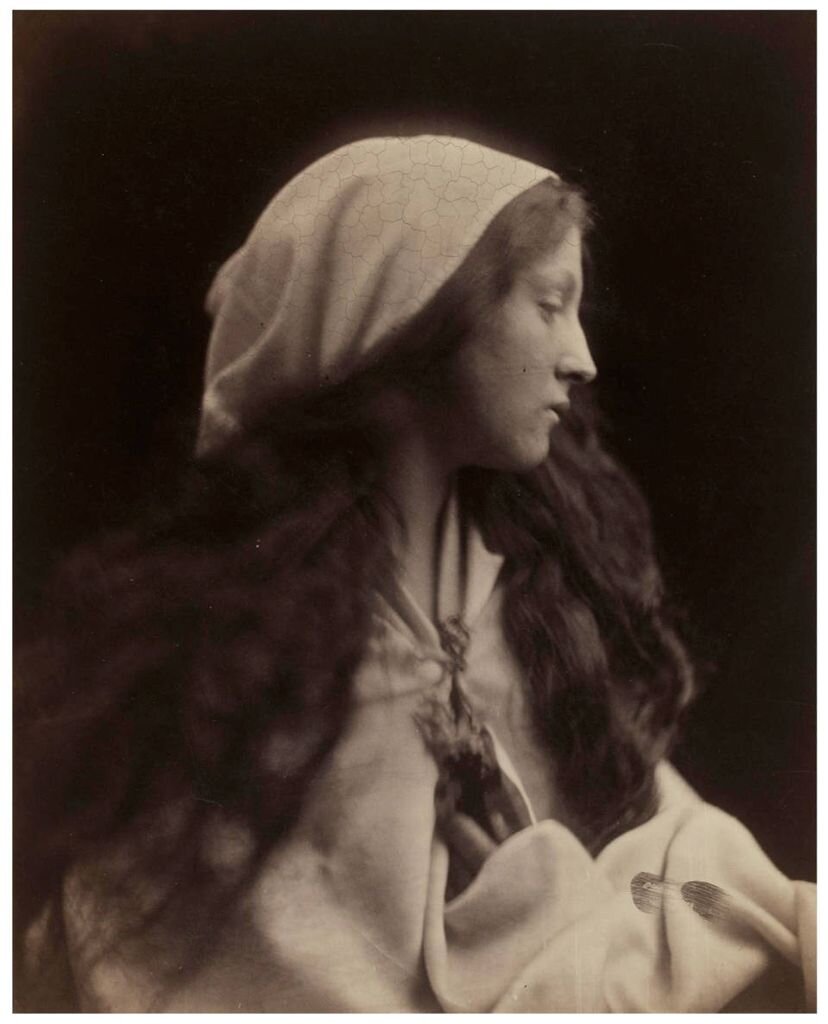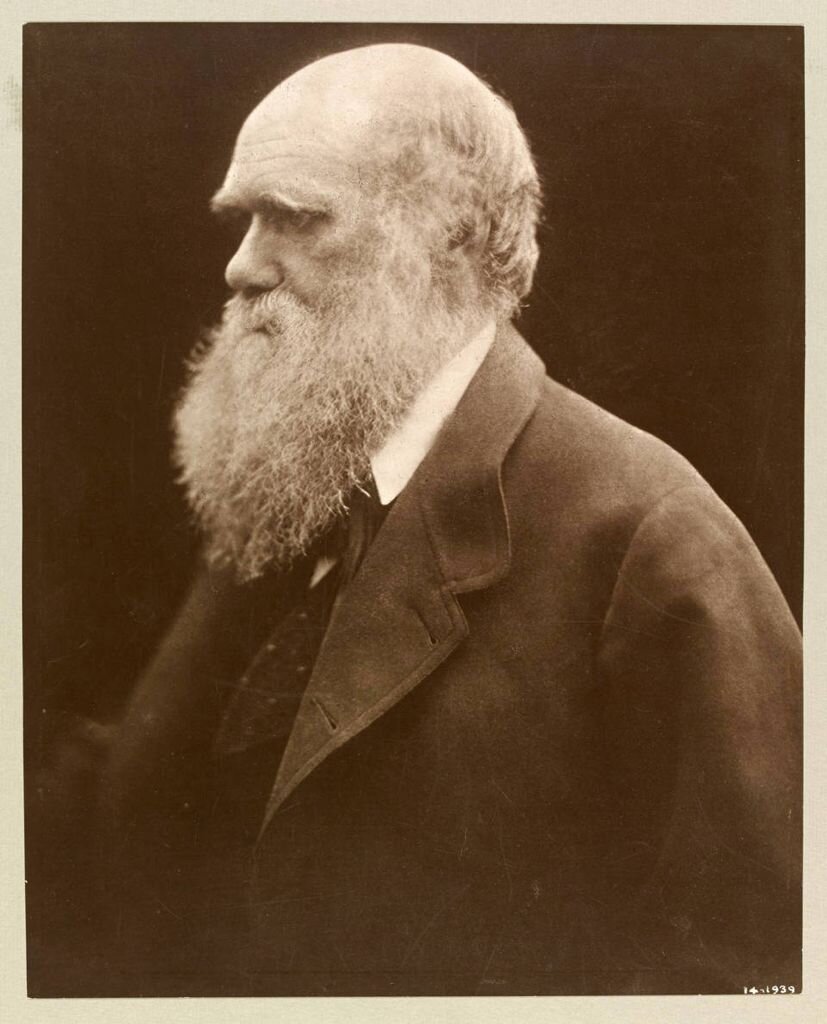Julia Margaret Cameron
Julia Margaret Pattle was born in Calcutta on 11 June 1815, the fourth of seven sisters. Her father was an East India Company official and her mother descended from French aristocracy. Julia Margaret Pattle married jurist Charles Hay Cameron in 1838. The couple had six children, and in 1860 the family settled on the Isle of Wight.
After receiving a camera as a gift from her daughter at the age of 48, she converted a chicken coop into a studio and a coal bin into a darkroom and began making portraits. As the wife of a retired jurist, Cameron moved in the highest circles of society in Victorian England. She photographed the intellectuals and leaders within her circle of family and friends, among them the Poet Laureate Alfred, Lord Tennyson, Henry Wadsworth Longfellow, Thomas Carlyle and Charles Darwin. Within two years Cameron had sold her photographs to the South Kensington Museum (now the V&A), which in 1868 granted her the use of two rooms as a portrait studio, effectively making her our first artist-in-residence.
Especially noteworthy are her sensitive renderings of female beauty, as in her portraits of the actress Ellen Terry and Julia Jackson; the latter was her niece, who would one day be the mother of the writer Virginia Wolf. Cameron photographed these famous faces and anyone else who would let her. Such local figures as the postman, as well as her own family and servants, appear in many of her images with many of her subjects posing for pastoral, allegorical, historical, literary, and biblical scenes,
"My aspirations are to ennoble Photography and to secure for it the character and uses of High Art by combining the real and ideal and sacrificing nothing of the truth by all possible devotion to poetry and beauty."
She has an intense work ethic and a firm belief the ‘divine’ power of the medium. She also dared to break the rules and push the boundaries of accepted norms. Her photographs were intentionally out of focus and often included scratches, smudges and other traces of her process. She was fearless in her creative vision and tireless in pursuit of it.
